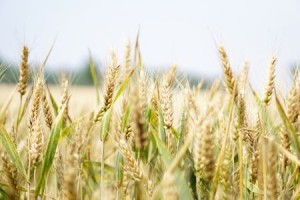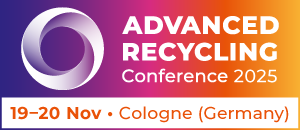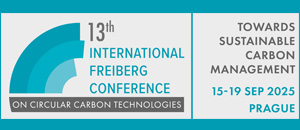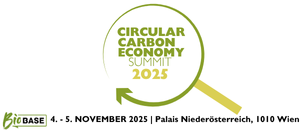 Sometimes, using recycled plastic is not an option. In such cases, it is possible to choose a sustainable alternative, such as bioplastic. There are some caveats with regard to bioplastics at the moment – they are more costly than regular plastics and the supply cannot meet the demand just yet – but their popularity is growing rapidly. This development is driven by the impending shortage of fossil resources and the growing focus on policies centred around the realisation of a sustainable bio-economy. At the moment, bioplastics make up circa 1% of the total plastic market, but this percentage is expected to grow quickly. In this chapter, you can read all about bioplastic, the ideal sustainable production material of the future.
Sometimes, using recycled plastic is not an option. In such cases, it is possible to choose a sustainable alternative, such as bioplastic. There are some caveats with regard to bioplastics at the moment – they are more costly than regular plastics and the supply cannot meet the demand just yet – but their popularity is growing rapidly. This development is driven by the impending shortage of fossil resources and the growing focus on policies centred around the realisation of a sustainable bio-economy. At the moment, bioplastics make up circa 1% of the total plastic market, but this percentage is expected to grow quickly. In this chapter, you can read all about bioplastic, the ideal sustainable production material of the future.
Types of plastic
First, let’s go back to the basics and focus on the different types of plastic. Fossil-based plastics and bioplastics come in different varieties. In general, we distinguish between four types:
- Biobased and non-biodegradable, so-called “drop-in” (bio-PE and bio-PET)
- Biobased and (naturally or industrially) biodegradable (PLA, PHA, PBS and corn starch blends)
- Fossil-based and non-biodegradable (ABS, PC, PS, ASA, PB)
- Fossil-based and (industrially) biodegradable (PBAT, PCL)
The first two are bioplastics that share the same characteristics as regular plastic, except for the fact that the basic molecules come from natural resources such as starch from potatoes and corn, sugar, cellulose, lactic acid or proteins. The major benefits of biobased plastics are that they reduce our dependence on fossil resources and, contrary to fossil-based plastics, are climate-neutral.
Some bioplastics are naturally compostable; in water, outside air, soil or a combination thereof. Then there are bioplastics that are degradable, but not in nature. Whatever type you use, reuse and recycling are viable options for bioplastics as well. In fact, this is actively encouraged by various government institutions.
The third type of plastic is fossil-based and non-biodegradable. Most plastic falls into this category. The fourth type is fossil-based and has specific characteristics that make it biodegradable. At the moment, this type of plastic is made from virgin resources. In the future, the goal is to use residual materials and waste streams for its production as well.
The pros and cons of bioplastics
There exists quite a bit of confusion with regard to bioplastics. Do they always offer (more) environmental benefits? Can they help solve the problem of the “plastic soup?” This confusion makes it harder for companies to start using these materials.
Pros:
- You save fossil resources by using (annually) renewable biomass (such as sugar and starch) and residual streams (such as beet pulp);
- Biobased plastics have the unique property of neutralising CO2;
- Some variants are biodegradable, which contributes to a solution for the waste problem.
Cons:
- Some of the biobased plastics are made from edible resources, which is subject to some controversy;
- Bioplastics are generally more expensive than fossil plastics;
- Even biodegradable plastic does not simply disappear. The rate at which plastic is broken down depends on the type of material and the environment. Some bioplastics can be broken down entirely in a matter of months, but in the meantime, they continue to pose a risk to animals, which can get trapped in this plastic or ingest it.
Applications for bioplastic
At the moment, biobased and biodegradable plastics are used for e.g. (food) packaging materials, disposable cups and cutlery, shopping bags and in the agricultural sector. The best application for a type of plastic depends on its characteristics. For example, a biobased PLA that is easily permeable to water vapour is not suited for the production of water bottles. On the other hand, it offers unique benefits when used for a “breathing” packaging for fruit and vegetables.
How close are we to a future with biobased plastics?
If a sufficient amount of biobased plastic was available, 85-90% of all fossil-based plastic could easily be replaced by biobased plastic. However, we are not quite there yet. At the moment, circa 0.02% of the world’s agricultural land is used to cultivate the resources for bioplastics. According to researcher Christiaan Bolck from Wageningen Food & Biobased Research, we would need circa 5% of the world’s total annual biomass harvest to fully transition to biobased plastics. As you can see, we have a long way to go.
Rompa Group and sustainable plastics
Although we have a long way to go before we can solve the problem of plastic waste, the first steps are already being taken. Rompa Group accepts its responsibility in this regard. As a production company that manufactures plastic products, we understand the urgency of a cleaner environment and are eager to show the world how you can contribute to this goal in an innovative manner. For example, we separate and shred our own waste and – if possible – reuse the material ourselves. Alternatively, we send it to other organisations that use it for the production of plastic products. We also purchase recycled material ourselves and are conducting tests with bioplastics for several major customers. Lastly, we work together with suppliers on the use of recovered raw materials.
Source
Rompa Group, press release, 2020-07-27.
Supplier
Rompa Group
Wageningen University
Share
Renewable Carbon News – Daily Newsletter
Subscribe to our daily email newsletter – the world's leading newsletter on renewable materials and chemicals












